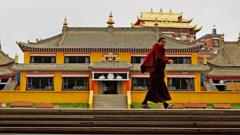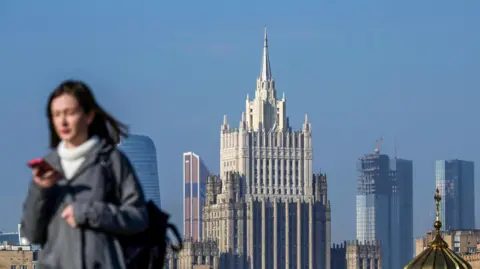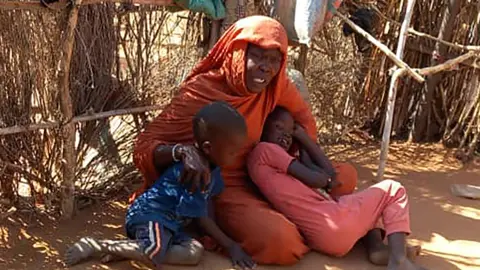As the Dalai Lama marks his 90th birthday, tensions heighten in Tibet amidst China's strict surveillance and repression. The BBC recently visited Kirti Monastery in Aba, a focal point of Tibetan resistance where the vibrant Buddhist tradition clashes with harsh political realities.
Monks like one we spoke with risk their safety by voicing concerns about the deteriorating situation for Tibetans under Chinese rule. "Things here are not good for us," he whispers, as unidentified followers of the Communist Party of China keep watch. This monastery, renowned for its history of self-immolation protests against Beijing's oppressive policies, remains a litmus test for Tibetan resilience.
The presence of security forces, including a police station erected at the monastery's gates, underscores China's ongoing efforts to silence dissent. For nearly 75 years, Tibetans have endured stringent control over their rights and culture, reducing their faith's enduring influence as the Communist Party seeks to reshape their identity to fit its narrative.
Aba, positioned outside the official Tibet Autonomous Region (TAR), holds a complex history, fueling uprisings against Beijing in 2008 that resulted in violence and casualties. The Kirti monastery has been synonymous with acts of sacrifice, earning the monicker "Martyr's row." Despite challenges, residents continue to promote their identity through prayer and tradition, often amid surveillance that stifles open expression.
Unfolding discussions surrounding the Dalai Lama's anticipated succession add urgency to Tibetans' plight. After announcing a succession plan, the Dalai Lama emphasized the necessity of choosing his successor beyond Chinese control, setting the stage for a potential confrontation with Beijing, which insists its role in appointing the next leader should remain intact.
Amid successful initiatives aimed at fostering tourism and infrastructure development, the cultural fabric of Tibetan society hangs in the balance. New regulations mandate that children receive education in Mandarin, disrupting traditional teachings. Experts warn that these changes threaten Tibetan Buddhism's future and could lead to an erasure of cultural practices.
As we traveled the rugged terrain towards Aba, two worlds emerged—a breathtaking landscape juxtaposed with the Party's domineering influence. While tourists bask in the beauty of Tibetan culture, the reality for its indigenous people is one of surveillance and assimilation, where expressions of faith risk persecution.
Amid these challenges, the Dalai Lama's legacy endures within the hearts of many. Tibetan women, bearing the weight of tradition and culture, walk resiliently through the Kirti monastery, harmonizing their struggles through song. As they spin prayer wheels, their steadfast identity represents a centuries-old fight against cultural dilution.
As the Dalai Lama's age prompts essential conversations about Tibet's future, the community's identity remains at stake, with hopes resting on whom they recognize and support as their next spiritual leader. From within the confines of the Kirti Monastery, these voices resonate louder than the watchful eyes of the state, embodying a spirit of perseverance in the face of impending uncertainty.




















